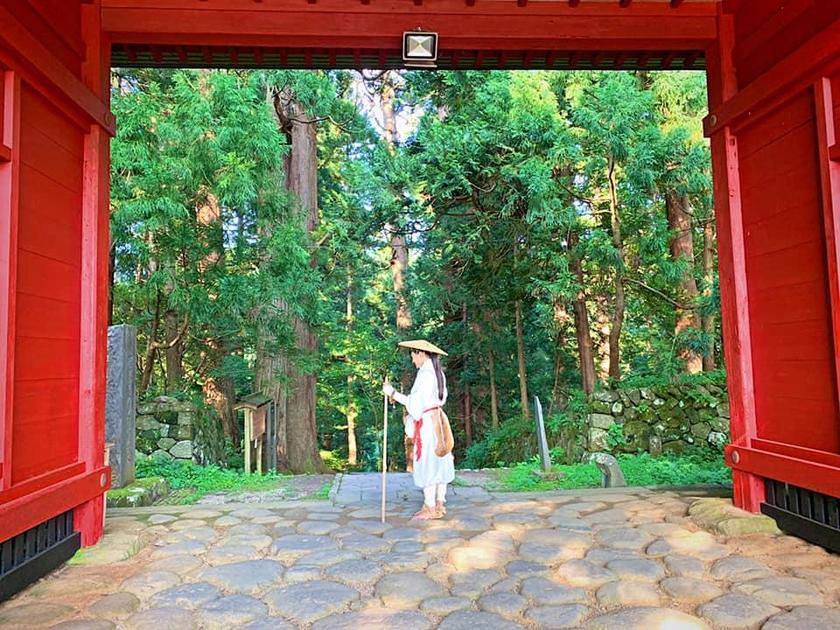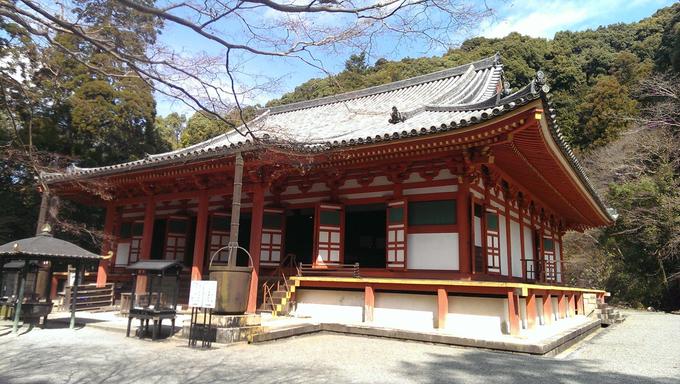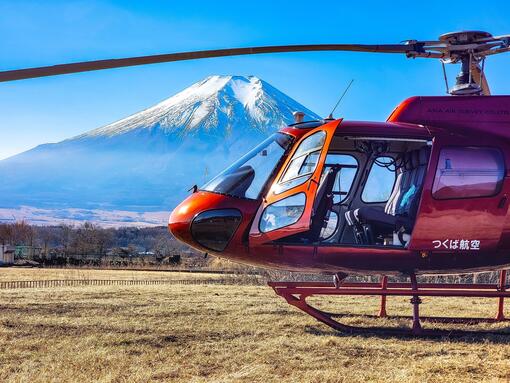
Japan Travel Inspiration - 6 Ideas
So you've spent some time in Japan already, or maybe you live here. You've thoroughly explored Tokyo, you've done Kyoto, Osaka and Nara and you're looking for something new. Some hidden corner of Japan that is as yet unexplored by you. Maybe you're looking for adventure, or just a relaxing escape. Maybe you want to delve deeper into the mystical shrines and temples dotting the landscape of this country, but don't know where to look outside of Meiji Jingu or Nikko.
Whatever the case, read on. This article will give you some wonderful ideas of where to go, thanks to six Japan tourism experts. These experts are all working in the tourism industry in Japan and have travelled the country extensively. They have listed their favourite or most memorable spots in Japan, so that you can gain inspiration and travel off the beaten path this Summer. Even better - you'll support the local communities that you may not previously have considered.
1. Elizabeth from Arigato Food Tours recommends Yamagata
Yamagata Prefecture lies in the West side of the country, bordering the Japan Sea. Compared to many places in Japan, it is not so easily accessible and thus one of the least visited prefectures by tourists. However those that choose to skip Yamagata are missing out on some of Japan's best cultural and natural spots. In fact, according to Elizabeth - "I feel like I can stay there for a long time and still not see everything that it has to offer." Perhaps a week in rural Yamagata might be the perfect Summer trip. Discovering the unknown, meeting the locals who are said to be lovely - "the people were so NICE and welcoming. That really stood out for me".
What did she like the best? "I participated in many experiences and enjoyed so many places that I have never found in Japan.. I especially loved the Yamabushi experience."
The Yamabushi experience is a true "authentic Japan" experience, taking place on the Dewa Sanzan. These towering mountains are filled with spiritual energy and have been worshipped by pilgrims for over 1,500 years. The Yamabushi, clad in white robes representing the dead, are spiritual followers of Haguro Shugendo, a confluence of Shintoism and Buddhism religions. They believe that by distancing themselves from society and connecting with nature, they will reach enlightenment. They undertake meditation under freezing waterfalls and grueling treks through the forest.
While traditionally Yamabushi training was only open to men, these days anyone can participate in the tradition. Tourists can get a taste of the Yamabushi lifestyle by staying in a traditional "shukubo" lodge at the base of the Dewa Sanzan. These lodges run experience programs designed so that people can learn more about the Yamabushi. You don the traditional robes, try authentic "shojin ryori" (traditional Yamabushi cuisine developed by the monks of the mountain), take part in a special fire ritual before finally ascending the Dewa Sanzen.
If you want to take part in the official Yamabushi training held once a year, you will need to speak Japanese. These training sessions take place in isolation in the mountains with no internet, bathing or comfort allowed.
2. Alex from The Hidden Japan loved the Izu Islands
Luckily for Tokyoites, the Izu Islands are actually part of Tokyo. Remote, exotic and a far cry from the hustle and bustle of big-city Tokyo. The nine Tokyo islands, listed by distance from the shore, are Oshima, Toshima, Niijima, Shikinejima, Kozushima, Miyakejima, Mikurajima, Hachijojima and Aogashima. While you can reach Oshima in less than two hours, some of the more remote islands will require an overnight ferry trip, so please check yourself or inquire with an agent like Omakase Tours in advance.
Alex thought that "The Izu Islands particularly stood out as they were remote, culturally unique, and surprisingly accessible for such a remote location!" But there are nine islands, how can you choose? It depends on how much time you have, since some are much easier to reach than others, and just how isolated a place you seek.
Alex went to Niijima and Shikinejima. About Niijima, he said - "Niijima was an Absolute surfing paradise and the waves were absolute peak! Also the island is practically littered with free/natural onsen which was perfect because surfing does a number on the muscles!
Indeed, Niijima is known for it's amazing surfing with its long sandy beaches, towering cliffs and thundering waves. If you don't bring your own gear, most of the beaches best known for surfing (such as Habushiura Beach), have rental gear available. You can also opt to take a surf lesson if you're a novice surfer.
For those wishing for a little calmer water, don't worry, they are beaches for swimmers too - try Mamashita Beach for some rock pool swimming areas. It's not all about swimming and surfing too, the island is also famous for glass works and mysterious Moyai carvings. You can try glass blowing in the Niijima Glass Art Center or learn about the culture in the island's museums.
You can reach the island by a 35 minute flight from Chofu or a 2.5 hour ferry from Takeshiba.
Fifteen minutes by ferry is neighbouring Shikinejima, making it a good idea to do as Alex did and visit both in the same trip. This island is known for its tide pool hot springs, spectacular blue waters and lovely sandy beaches. Shikinejima is small and undeveloped, with few roads and people. If you are seeking a destination where you can relax and contemplate, this is your island. You can swim and sun yourself on the beaches, strengthen your body hiking the forested trails and experience real wild hot springs.
Alex really loved the natural hot springs - "Shikinejima is also volcanic and there are a lot of places where the onsen water flows into the ocean creating warm zones that are absolutely flushed with marine life! Both islands I just got around and explored with rental bikes which was lovely"
The beaches on Shikinejima are calmer and more family friendly than on Niijima. Tomari Beach is the most famous, its aquamarine waters lapping at the shell-shaped cove are like a scene from a postcard. Nakanoura Beach on the other hand is well known for its snorkeling, and Oura Beach is said to have spectacular sunset views.
For both Niijima and Shikinejima, getting around on bicycle is an excellent choice. Rental bikes are available.
3. Cory from Cory Cassel Travel speaks highly of Akita
Why does he like it so much? Because "it has very few tourists, spectacular scenery, welcoming residents and amazing onsens." Also running along the Japan Sea, Akita is another one of the least visited prefectures in Japan. It is also one of the places suffering most heavily from depopulation, as the younger generation moves out for more economic opportunities elsewhere. You may know of Akita due to its Kanto Matsuri, a festival held every Summer in which participants balance long bamboo poles with flaming lanterns on them. This festival is something you must see at least once - it's actually quite scary when the bamboo poles are dropped and you're in danger of being burned!
There is more to Akita than just the Kanto Matsuri though. As Cory says - "Scenic train lines, nature walks and hikes, some of Japan's most famous onsens, historical sites, the coastline... It doesn't end. Definitely a destination for people who enjoy the great outdoors."
This is very true. Akita is home to the Shirakami Sanchi, a mountain range made up of the last virgin beech forests in Japan. There are extensive hiking trails leading to lakes, waterfalls and stunning views. And let's not forget Hachimantai, a mountainous area of Akita with a volcanic landscape and some of the best hot springs in Japan. In fact, if you fancy hiking, camping, boating, swimming, climbing and basking in a hot spring this Summer, then Akita might be a good destination for you. You will find far fewer tourists than you might encounter elsewhere. Lake Tazawa and Lake Towada both provide ideal bases for camping or spending a relaxing lakeside vacation.
Definitely stop at Nyuto Onsen while you're at Lake Tazawa. It is a collection of eight ryokan lining a rustic street which has operated for over 300 years. The baths have a unique milky colour and have both indoor and outdoor pools, many mixed gender.
If you're a train fan - "the Akita Nairiku Line is my absolute favourite thing to do in Akita. One of very few privately owned rail lines in Japan, it boasts spectacular scenes and attractions along the way." It operates between Takanosu in the city of Kitaakita and Kakunodate in the city of Senboku. The train is only two cars long and takes you on a journey through picturesque valleys, across perilous bridges crossing the valleys and through deep tunnels that lead through entire mountains. The slow pace of the train will allow you to really stop and contemplate while watching the colourful scenery roll by.
4. Elisabeth from Nagoya is not Boring recommends Inuyama
Inuyama is a small town near Nagoya, most famous for its castle. The castle is one of Japan's oldest wooden castles and one of the few original castles remaining. The castle overlooks the scenic Kiso River, and the Inuyama Historical District makes for a wonderful stroll around a preserved old town. Elisabeth, a Nagoya local, knows a lot about Inuyama. She says "When you arrive to Inuyama downtown you will feel like a back in time travel to Edo period. Ancient houses, delicious traditional street food, Inuyama Castle, the Japan's oldest castle with an amazing views of the city and the Kiso lake as well...You can find rare temples like the Momotaro Jinja, and the list goes on". The town is both walkable and bikeable and perhaps the hidden gem of the more industrial Nagoya.
Nearby is the Meiji Mura, an open-air themepark based on the Meiji Period of 1868-1912, which houses over 60 buildings from the era.
Similar to Gifu City, Inuyama has a tradition of cormorant fishing, which is still practised to this day. You can book an excursion boat to watch the practice from May to October. During the Summer months, you can also ride the rapids of the Kiso River in flat-bottomed wooden boats. Both of these can be booked in the tourist office near Inuyama Station.
5. Gary from Amami Onsen Nanten-en wants to show you another side of Osaka
Gary wants to "dispel the myth that Osaka is just a big city with nothing but Osaka Castle, USJ and Dotonbori to see." It is true that most tourists to Osaka simply stay in the city, view the main sights and then head to Kyoto or another big city. Have you visited any of these spots that he recommends?
Eifuku-ji
Eifuku-ji is a large temple in eastern Osaka. It sits in a quiet, rural location and is the final resting place of Shotoku Taishi, a symbolic Emperor from 592 to 628. He was instrumental in the spreading of Buddhism throughout Nara, as well as the author of the first formal constitution of Japan. Eifuku-ji was built to protect his burial site. It incorporates several shrine buildings as well as a park. Every April they hold the Taishi Shotoe Festival of Lights where over 10,000 candles are placed around the complex.
Kanshin-ji ("one of the most significant temples no one ever heard of")
Situated in Kachinagano in Southern Osaka, Kanshin-ji is a rather unknown temple of great beauty and history. The head of legendary samurai Kusunoki Masashige is buried here (yes, just the head, buried in a special grave). The temple also holds many national treasures in its main hall. The buildings are an interesting mix of Chinese, Japanese and Indian Buddhist architecure and they present an impressive picture surrounded by green trees in summer and colourful foliage in Autumn.
Amami (because I work there and know it like the back of my hand)
Amami Onsen used to be a stopover for pilgrims on their trek to Mt. Koya. The pilgrims would soak in the waters to heal their fatigue, as the waters of Amami are said to be medicinal qualities. Gary works at the traditional Japanese inn called Nanten-en. It is a countryside getaway only 40 minutes from the city, set by the river, boasting large Japanese style gardens as well as the onsen itself. The main inn building is over 100 years old and is a registered cultural asset of Osaka.
The Katsuragi 28 Shuku Kyozuka ("because it's incredibly mysterious!")
Parts of Japan are well known for their pilgrimage trails. You have probably heard of the Kumano Kodo, or perhaps the Nakasendo. But there are many more historic trails dotted throughout Japan. One of these is the Katsuragi 28 Shuku Kyozuka that runs between Osaka, Wakayama and Nara Prefectures. It dates back to the 8th Century and follows an 80km trail leading between 28 shrines. Like the above Dewa Sanzan, it has origins in the Shugendo practice; in fact it is said to be the very first Shugendo route created! Several of these shrines are accessible from Amami Onsen, you can read an indepth report by Gary here: https://en.japantravel.com/osaka/katsuragi-28-shuku-kyozuka-trail/65925.
6. Rill from Attractive Japan has found a true horse sanctuary in the Kiso Valley
The Kiso Valley is a part of Nagano Prefecture, running alongside the Central Alps. Most famous there is the Nakasendo, the 500km trail which lead between Edo and Kyoto back in the Edo Period. Now there are several post towns remaining in a preserved form, most notably Magome, Tsumago and Narai. Hiking the trail between these towns is a wonderful experience, especially in the green season when nature abounds around you. There is more to the Kiso Valley than its history however. As Rill says - "My favourite place is the Kiso Valley, especially the Kaida plateau, where you can find the Kiso Horse park, a place that is a preservation and breeding centre for one of the 8 traditional horse breed of Japan; the Kiso Horse."
The Kiso horse is strong and can live on a simple diet. It can withstand great cold due to its history of being bred in the mountains, and has sturdy legs suited to climbing narrow mountain trails. Horse lovers will delight in the Kaida Plateau, where the animals live freely and happily - a far cry from Japan's usual animal welfare reputation. "This is one of the very very few places in Japan that is actually respecting horses natural behaviour and need, by letting them roam in folks in huge fields at the foot of Mount Ontake. Horses look truly so happy there.
There you have it, six different ideas for your next vacation in Japan. I hope it provided some inspiration!
Thank you to Alex Litz, Derek Yamashita, Elizabeth Anne and Gary Luscombe for providing photos.




































